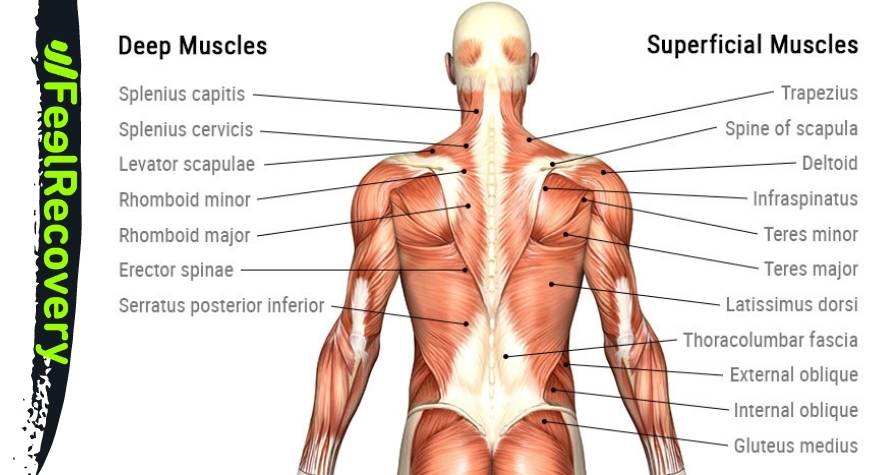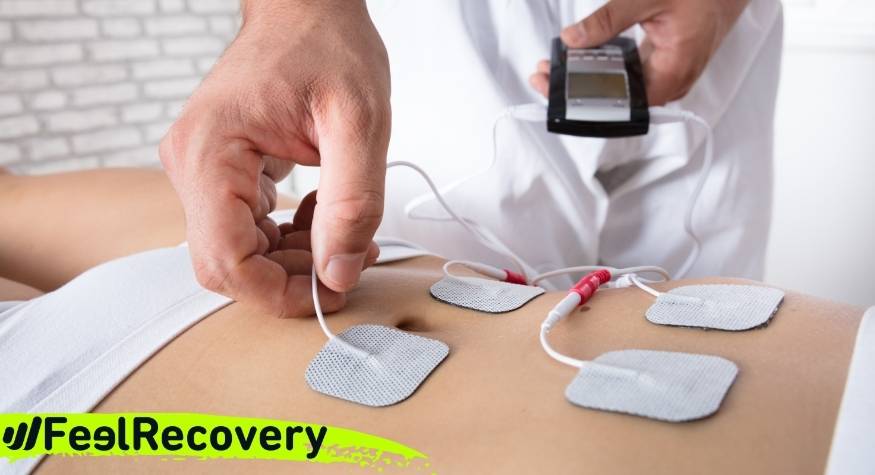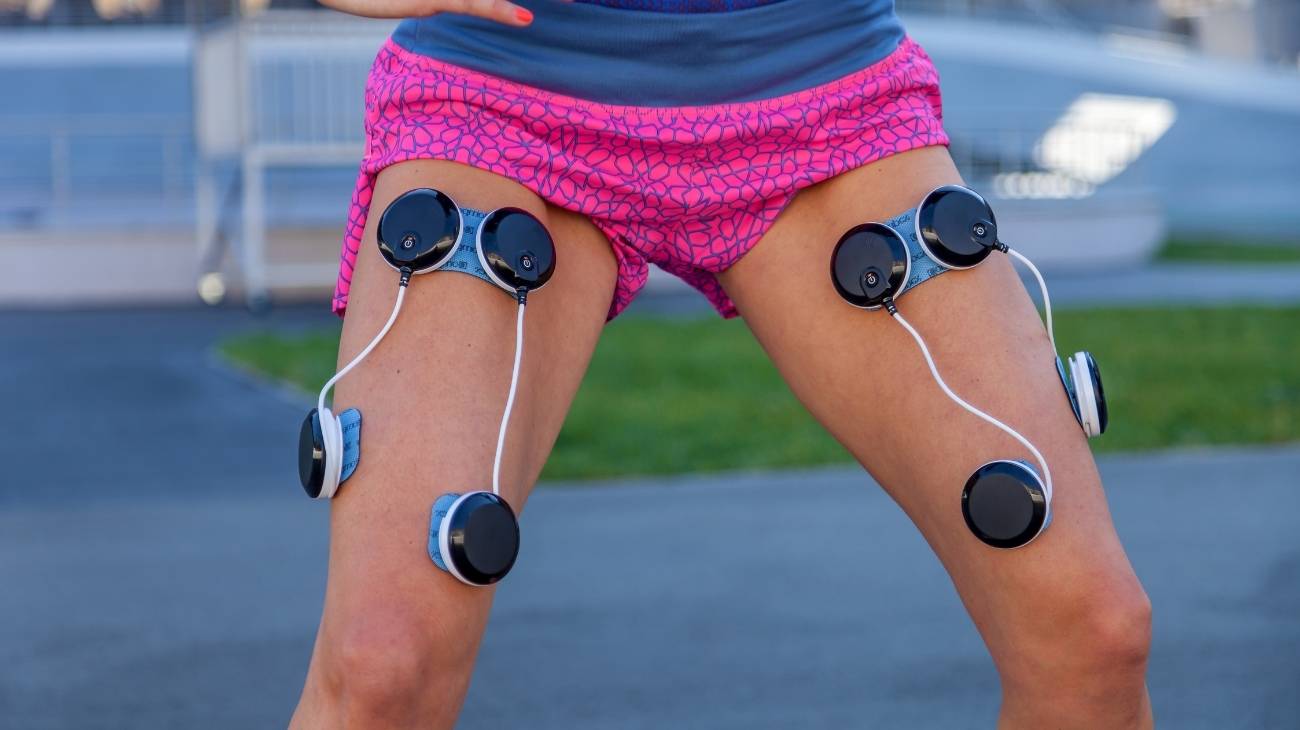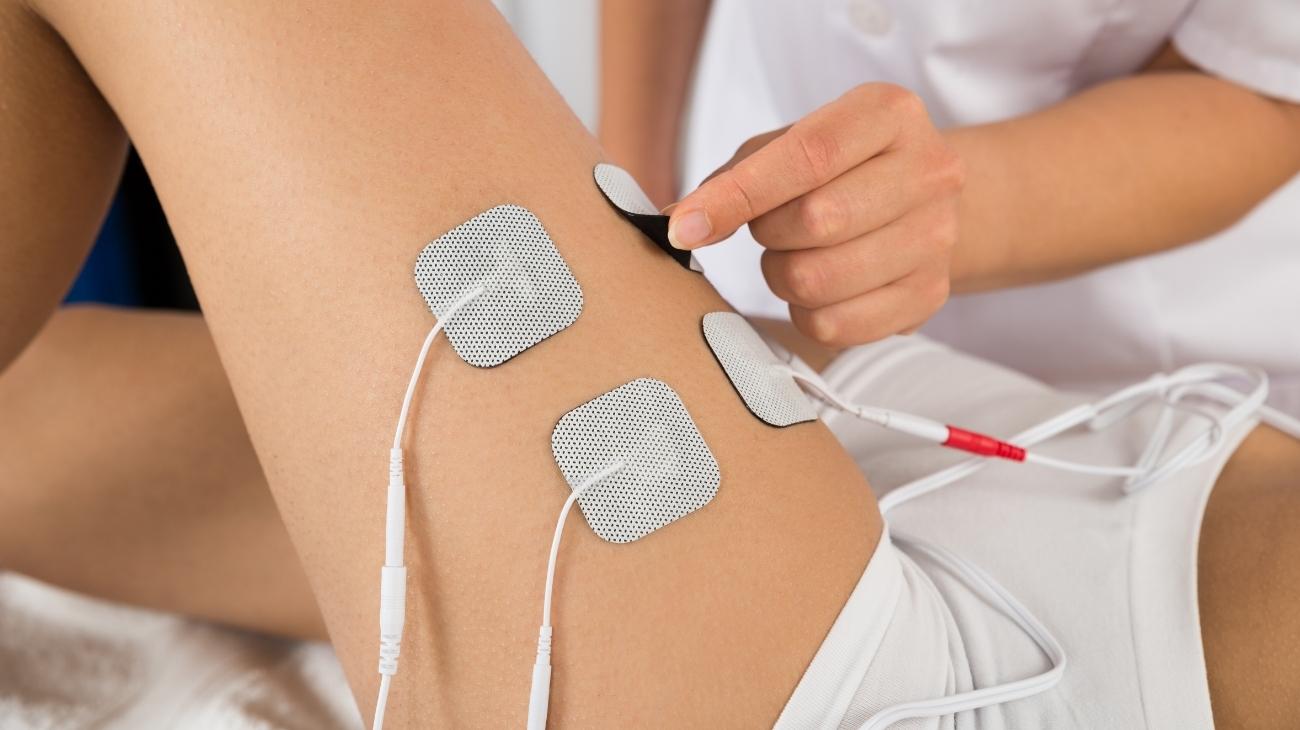Through electrical currents, as if they were natural bioelectric discharges, TENS devices are responsible for soothing pain in any part of the body through different frequencies in a single application. It should be clarified that this method does not treat the source of the problem, but it is excellent for reducing the intensity of muscular discomfort.
The therapy is perfectly applicable to the lower back, where important nerve endings are concentrated. We show you the most relevant details of this non-invasive therapy, which is still used by professional sportsmen and physiotherapists all over the world.
What is low back pain and what are the causes of back pain?
Although low back pain is known as a painful condition that anyone can have in their lives, few people stop to find out where and why it is caused. This ailment is generated when there is a significant strain in the muscle fibres or in the vertebral ligaments, part of the reason why it appears is because people carry out an excess of physical activity.
Even when athletes are exposed to a change in training intensity, the back muscles are likely to give way and overstretch to the point of contraction. One of the immediate and logical actions is to try to reduce the pain and for this TENS therapies are highly efficient.
These are some of the risk factors that can cause low back pain:
- Structural problems: such as disc injuries, displaced vertebrae and facet syndrome, which is an affectation of the interapophyseal joints. Any pathology that limits natural mobility in the back can cause muscle strains associated with low back pain.
- Functional problems: in addition to the ailments in the lower back, there are pathologies that originate in the upper and lower train and affect the muscular health of the lower back, such as hip malformations, cervical deviations and muscular limitations that occur in scenarios such as sedentary lifestyles.
- Non-mechanical problems: such as tumours, visceral failures and inflammation in the joints of the vertebrae. These are all ailments originating in the organs close to the spine and leave severe pain in the lower back musculature. A complete analysis of the real origin of the ailment must be carried out in order to offer the correct treatment.
- Sciatica: TENS machines are ideal for stimulating nerve endings, such as when people have problems with sciatica. Sciatica is often caused by nerve compressions from soft tissue. The constant electrical impulses cause the muscles to relax and the compression becomes less and less. The pain in sciatica runs from the lower back through the buttocks to the thighs.
- Incorrect posture: Sometimes, incorrect standing and sitting can cause the lower back to suffer from an irregular curvature of the spine. When people sit for long hours, the cervical vertebrae can lose their original curvature, as can the lumbar vertebrae.
- Incorrect habits: lifting weight with the strength of the back alone, not eating enough protein and sleeping in unusual positions can increase the likelihood of back strain and less rest. Specialists recommend people to be more aware of the need for healthy habits.
- High levels of stress: both psychology and medicine have proven that high levels of stress, in people who do not control their emotions, are real risk factors for causing contractures in the back, which trigger a picture of pain and stiffness that can be controlled with stimulations with STEN machines.
What type of TENS machines are ideal for low back pain relief?
In addition to TENS machines, there are a variety of other equipment and electrical stimulation techniques that have similar effects on muscle pain.
- Kotz current: these are also called Russian waves and stimulate the deep muscles. Studies have shown that these machines can be used to increase muscle mass and endurance. In recent years they have been used for aesthetic purposes, giving way to other options in the field of physiotherapy.
- Neuromuscular electrostimulation (NMES): these work perfectly to improve muscle range of motion (ROM), improve toning and soothe pain when there are minor physical injuries. Remember that a specialist must apply this and all therapies with electrical impulse machines, it is not a self-massage therapy.
- Functional electrostimulation (FES): this is a new level of stimulation to achieve specific functions such as walking, moving a limb and having sensations in parts of the body that may be deactivated for nervous reasons. It is a complex therapy to perform, but is rarely used for sports and relaxation purposes.
- Percutaneous Electrical Neurostimulation (PENS): unlike TENS machines, which are non-invasive, PENS equipment requires the insertion of needles and stimulators directly on the nerves to achieve different purposes, including having a reaction in sending electrical signals to the brain and spinal cord.
How to use a TENS unit to relieve back pain?
The first thing you should know is that it is a complex therapy to perform. A well applied session does not generate muscle contractions, you only feel a kind of tingling in the area where the electrodes are placed. Remember to always go with an expert.
How and where to use?
As we mentioned at the beginning, there are three ways in which TENS unit relieves pain:
- Nullifies the transmission of signals: these devices inhibit the work of the nerve endings in the affected area. When these signals are not emitted, the brain does not know that there is a painful process going on and there are no typical reactions to an injury, such as intense pain.
- Increases the amount of endorphins: this is the hormone of life and happiness, as holistic specialists call this biochemical component, but it actually provides a lasting and stable feeling of well-being. It also works as a natural analgesic in the body by reducing the pain potency of some types of injury.
- Controls blood flow: the constant electrical shocks to the muscles cause micro movements that create bridges in the passage of blood, which promotes muscle recovery by allowing more oxygen and nutrients to reach the muscle fibres.
To use a TENS device, small electrodes need to be placed on the skin, in areas where there is pain due to soft tissue injuries. The electrical discharges are punctual and short, so only an expert can safely apply this type of therapy, as there may be burns on the dermis.
Not all types of injuries can be treated with TENS devices, only muscle injuries that cause pain, stiffness, numbness in the back and compression of the nerve endings. The electrodes should be placed where there is the greatest muscle mass, so it is not favourable for them to be close to bony structures such as the vertebrae.
Length of sessions
The duration of a therapy depends on the frequency measured in Hertz (Hz) that the therapist needs to use according to the type of injury to be treated in the patient.
- There are sessions that can last several hours a day with frequencies of 80 Hz to achieve an analgesic effect in the first 30 minutes of application of the therapies. These are the kind of frequencies that anyone can cope with, which is why the sessions are extended for permanent relief.
- There are also 1-4 Hz therapies, which should be applied in sessions of 60 minutes maximum. They are used to achieve small contractions in the muscle fibres, which allows better blood flow to the muscles.
- There are shocks of only 15 minutes, but with a frequency of 10 Hz. They are used to have a stimulating effect on the central nervous system.
Regularity of use
Studies show that the benefits of these devices can be obtained with sessions lasting 30 and 60 hours per week. As the use and frequency of use varies according to the purposes to be achieved, it is important to clarify that there is no standard time that everyone can apply.
However, experts recommend that if the sessions are too frequent, there should be one or more days of rest to let the skin and tissues rest. In addition, excessive use of TENS equipment can lead to internal burns.
What are the best alternatives to TENS units for relieving back pain?
Each case is different, just as there are a wide variety of alternatives to electrical stimulation to control the intensity of pain in different physical and soft tissue injuries.
- Back massagers: these are devices that use friction by means of rotating heads and use heat to control some mild injuries generated by stress and by performing atypical movements with a lot of intensity. They are a practical option, easy to access and use.
- Manual Roll On Massager: this is a small electric ball with various intensities of vibrations that relax the fibres, increase blood circulation and treat tensions in the myofascial tissue.
- Massage hooks: these use between nine and 11 contact points to deactivate trigger points that cause pain locally and in areas associated with them. They are self-massage tools that only require hand strength to reach hard-to-reach muscle nodes in the back.
- Vibrating balls: these come in a standard size that will allow you to stimulate the lower, middle and upper back, all with the same product. They come with different vibration intensities and their main function is to offer muscle relaxation and better blood circulation.
- Myofascial release balls: these can be purchased either separately or in a pack of several balls with different shapes and densities. The usefulness of this product is to reach trigger points in the back that cannot be stimulated by the massage roller because of their extension. There is also a peanut-shaped ball for massaging the lower back without the danger of touching the vertebrae.
- Electric massage guns: like TENS devices, these guns are best for inhibiting pain signals from micro pain receptors to the brain and spinal cord. They use percussion rather than electrical impulses to provide muscle relaxation while reducing stress.
- Vibrating Foam Roller: Both conventional and vibration versions provide incredible myofascial release, thus eliminating many of the types of mild injuries that people may have at home, in the office and at the gym. Most massage rollers are made of one-piece, hypoallergenic material.
- Acupressure mat: This is another powerful tool that uses pressure on the muscles so that there is total relaxation of tissues that remain tense from excessive physical work. Like electrical stimulation equipment, the mats regulate temperature and allow for accelerated muscle recovery in case of fatigue.
- Massage chair: these are fairly bulky home appliances that offer vibration and body temperature control to provide relief from pain associated with low back pain and lower back contractures.
- Sofa massager: this is a stylish product suitable for people who want total relaxation, as it covers the user's entire body from head to toe. There is no limit to the use of this product as long as the person feels comfortable with the vibrations and there is no tingling or numbness.




